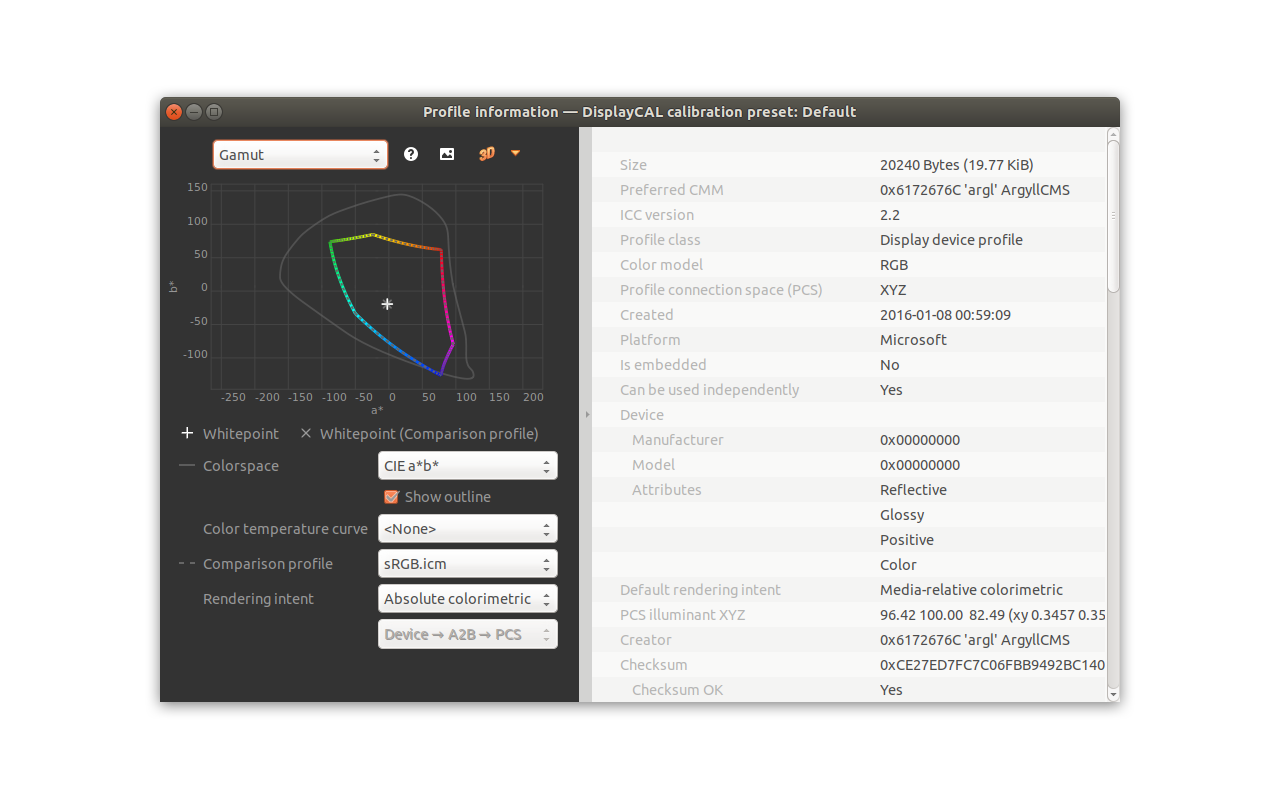
Some monitors have display ports, HDMI ports, USB ports, and so on, used for connecting different devices.


OLED monitors have wide viewing angles, for example.

#Mac display profile for photo editing full#
Resolution: Monitors for editing can also have different resolutions, from full HD monitors all the way up to 4K or even 8K monitors for more detailed work.Screen size: Monitors can have a range of different sizes, from small monitors of just 19, 21, 23 inches, or 24 inches up to big monitors with screens that are 40 inches large.Not sure what the ideal colour temmp, gamma, & other settings might be for gaming, but some web searching would probably turn up some useful info on this.If you want to buy the best monitor for your video editing needs, there are several key factors to be aware of, including: Hue, saturation & contrast are also settable mine are about the middle and I can't recall whether I set those myself or it showed them as default when I set up the user modes. The two modes look quite different: the Web one looks very much brighter than the print one - this is important for photo printing as otherwise I will be fooled by an over-bright monitor into thinking that my image is brighter than it really is, and it will print out too dark.įor the Web one, I have the colour temperature set to 6500 K, gamma at 2.2, and brightness at 25 (could probably go higher on latter but it seems easier on my eyes to keep it fairly low).įor the print mode I have the colour temp at 5000K, gamma at 1.8, brightness at 12. I use it primarily for photography and have set two custom "User Modes", which are the two I use all the time (rather than any of the defaults it came with): one is for when I'm working on images for web or screen use only (which is the one I use most of the time), and the other for images I'm going to print. Mine arrived with a printed form that showed all the results of that calibration hopefully yours did too. The PA248Q is supposed to be colour calibrated by Asus before shipping it out. I have the PA248Q too, and really like it = have found it to be an excellent monitor. macOS includes an excellent tool for calibrating your. The Created date shows when you set it up if it’s older than your current Mac, or its display, go ahead and select the profile then click Delete Profile to remove it. This comment doesn't address your question directly but may help add to your thinking about other modes for using the monitor for future applications. Select a profile and click Open Profile to see some detailed information about that profile. This may include your web-browser depending on which one and version you use. So which one to use in the end will depend on what non color-managed applications you use to look at images. However, non color-managed applications will still show colors wrong and they will be MORE wrong in default mode than in sRGB mode. Show colors outside of sRGB with good accuracy.If you do calibrate your display, you can revert back to the default mode (called Native on some monitors) and then all color-management-aware application will be able to: The truly odd thing is that those particular colors are kind of random until you calibrate your display! Once in sRGB mode your monitor may not be able to show colors which are outside of sRGB color-space which is why sRGB is not the default mode. Keep in mind that this mode is not calibrated, so your sRGB colors will be different from other sRGB colors.


 0 kommentar(er)
0 kommentar(er)
